The battery is often considered the heart of a vehicle’s electrical system, powering everything from the initial ignition to the complex network of electronic components that define modern automobiles.
While manufacturers typically design batteries to last between three to five years, the actual longevity varies significantly across different makes and models.
This variance can mean the difference between a vehicle that starts reliably for years and one that leaves you stranded unexpectedly in a parking lot.
Battery performance is influenced by numerous factors including the quality of manufacturing, the design of the vehicle’s electrical system, climate adaptability, and the driver’s usage patterns.
Premium vehicles often incorporate sophisticated battery management systems that regulate charging cycles and power distribution, while some economy models may utilize less robust components to reduce production costs.
Understanding which vehicles consistently deliver exceptional battery performance versus those that chronically underperform can be a crucial factor when purchasing a new or used car.
It can also provide current owners with realistic expectations about maintenance schedules and potential replacement costs. This comprehensive analysis examines five vehicles renowned for their battery longevity (lasting 6+ years) and contrasts them with five models notorious for premature battery failure (under 3 years).
For each vehicle, we’ll explore the underlying engineering decisions, technological implementations, and real-world performance data that contribute to their respective battery lifespans.
Whether you’re in the market for a new vehicle or looking to maximize the lifespan of your current car’s battery, this guide offers valuable insights into automotive battery reliability across different manufacturers and price points.
Five Cars with Factory Batteries That Last 6+ Years
These electrical engineering marvels feature intelligent charging systems and optimized component designs that consistently deliver battery lifespans well beyond industry averages.
Their sophisticated battery management computers maintain ideal charge levels through advanced algorithms that prevent deep discharges and overcharging cycles that destroy lesser batteries.
Strategic placement of batteries in temperature-controlled locations protects them from the extreme heat that accelerates degradation, ensuring consistent performance through multiple seasons.
Owners report routinely exceeding six years on original equipment batteries, with many experiencing trouble-free operation approaching a decade an impressive achievement that eliminates a common maintenance headache.
1. Toyota Prius (Hybrid)
The Toyota Prius has established itself as the gold standard for battery longevity, particularly regarding its hybrid battery system. While most discussions about the Prius focus on its high-voltage hybrid battery (which impressively lasts 10-15 years on average), the conventional 12-volt auxiliary battery in the Prius also demonstrates exceptional reliability, typically lasting 6-8 years under normal conditions.
Several engineering decisions contribute to this impressive performance. Toyota implements a sophisticated Battery Management System (BMS) that constantly monitors charge states, temperature, and voltage distribution across cells.
This proactive management prevents the deep discharge cycles that typically degrade conventional batteries in traditional vehicles. The Prius’s electrical architecture is designed with redundancy in mind, reducing strain on the auxiliary battery by leveraging the hybrid system for many functions that would normally drain a conventional car battery.
The positioning of the battery also plays a crucial role in its longevity. Unlike many vehicles that place batteries in the engine compartment where they’re subjected to extreme temperature fluctuations, the Prius houses its auxiliary battery in a more temperature-controlled environment within the trunk area.
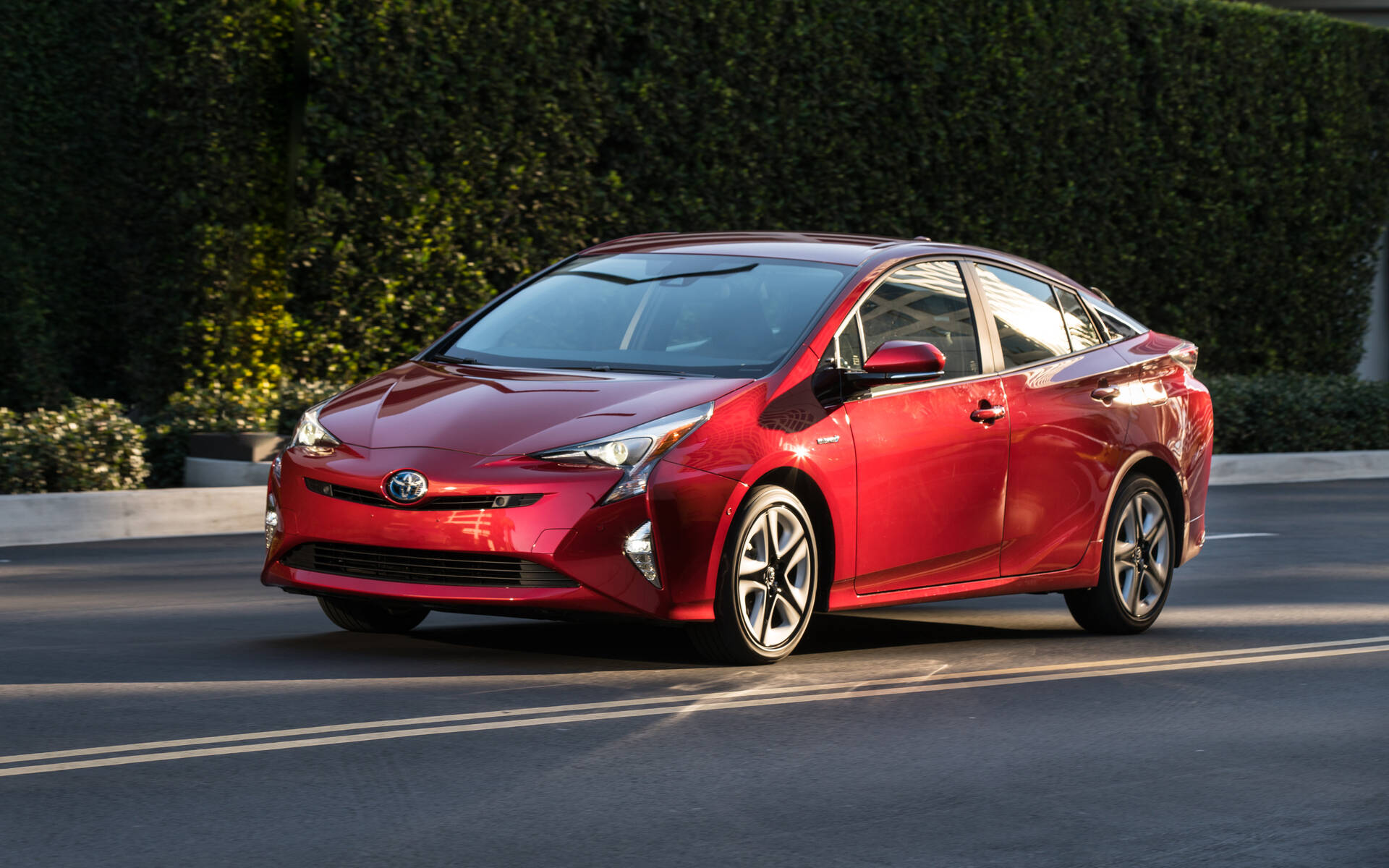
This strategic placement shields the battery from the heat stress that accelerates chemical degradation in conventional setups. Toyota’s commitment to quality control in battery manufacturing further enhances reliability.
The company maintains strict standards for their suppliers, resulting in batteries with consistent internal resistance characteristics and reliable cold-cranking performance even after years of service.
The cells utilize advanced lead-calcium technology rather than conventional lead-antimony, which reduces water consumption and minimizes maintenance requirements throughout the battery’s extended lifespan.
Prius owners frequently report exceeding the 7-year mark without battery replacement, even in extreme climate regions from Arizona’s heat to Minnesota’s cold winters.
This reliability translates to lower ownership costs and contributes significantly to the model’s strong resale value. For drivers concerned about long-term reliability and minimal maintenance requirements, the Prius stands as a testament to Toyota’s engineering excellence in battery technology and electrical system design.
2. Lexus ES Series
The Lexus ES series epitomizes luxury paired with exceptional reliability, particularly in its electrical systems. The factory batteries in these premium sedans consistently demonstrate impressive longevity, with owners routinely reporting 6-8 years of trouble-free performance before replacement becomes necessary.
Lexus engineers implement several sophisticated approaches to extend battery life in the ES series. The electrical architecture incorporates an intelligent power management system that minimizes parasitic drain when the vehicle is not in operation.
This system carefully monitors and regulates power consumption from accessories and onboard computers, ensuring they enter an ultra-low power state when the vehicle is parked for extended periods. The result is a significantly reduced rate of self-discharge compared to competitors in the luxury segment.
The battery itself is a premium AGM (Absorbent Glass Mat) type in most recent model years, featuring enhanced vibration resistance and superior cycling capabilities.
This construction allows for better recovery from deep discharge incidents and maintains performance consistency throughout seasonal temperature variations.
Lexus sources these batteries from top-tier suppliers with rigorous quality control protocols, ensuring consistent performance across their production run.

Vehicle design elements further contribute to battery preservation. The ES series features a particularly well-insulated engine compartment that shields the battery from extreme temperature fluctuations a leading cause of premature battery failure.
The charging system operates with precision voltage regulation, preventing the overcharging that often degrades battery components in less sophisticated systems.
Advanced alternator design ensures optimal charging patterns that maintain battery health without inducing unnecessary stress during recharging cycles.
Owner testimonials consistently praise the ES series for its reliable starting performance even after years of ownership. The dealer maintenance records show battery replacements occurring primarily beyond the 6-year mark, with many vehicles approaching 8 years on the original battery.
This reliability extends across various climate zones, though the battery performs particularly well in moderate temperature regions where extremes don’t accelerate chemical degradation processes.
For drivers seeking a luxury vehicle with minimal maintenance concerns, the Lexus ES series offers peace of mind with its exceptionally durable electrical system anchored by a long-lasting factory battery.
This reliability factor contributes significantly to the brand’s strong owner loyalty and industry-leading customer satisfaction ratings in the premium sedan segment.
3. Honda Accord (Non-Hybrid Models)
The Honda Accord has built a reputation for reliability across all its systems, but its electrical system and battery performance stand out as particularly noteworthy.
Non-hybrid Accord models consistently demonstrate exceptional battery longevity, with original factory batteries routinely lasting 6-7 years under normal driving conditions significantly outperforming the industry average.
Honda’s approach to battery longevity begins with thoughtful component selection. The company sources batteries from manufacturers known for producing cells with precise electrolyte formulations and plate construction techniques that resist sulfation the primary cause of capacity loss in lead-acid batteries.
These batteries feature enhanced internal grid designs that maintain structural integrity through thousands of charge cycles, preventing the internal shorts that often doom lesser batteries.
The Accord’s electrical system architecture contributes significantly to battery preservation. Honda engineers implement a particularly efficient alternator design that delivers precise charging voltages across varying engine speeds and electrical loads.
The system incorporates sophisticated voltage regulation that prevents both undercharging (which causes sulfation) and overcharging (which accelerates water loss and grid corrosion). This balanced approach ensures the battery maintains optimal charge levels without experiencing damaging stress.

Vehicle design elements further enhance battery performance. The battery location in the Accord benefits from excellent airflow management that prevents heat soak after engine shutdown a critical factor in regions with high ambient temperatures.
The electrical load distribution system intelligently manages power draw from accessories, particularly when the engine is off, preventing the deep discharge cycles that significantly shorten battery lifespan in many competitor vehicles.
Owner forums and service records consistently document Accord batteries reaching the 6-year milestone without significant performance degradation.
Many owners report strong cranking performance and electrical system stability well into the seventh year of operation. Particularly impressive is the battery’s consistent performance across diverse climate regions, from humid southern environments to cold northern winters, where many competitor vehicles require more frequent battery replacement.
For consumers prioritizing long-term reliability and low maintenance costs, the Honda Accord’s exceptional battery performance represents a significant advantage.
This reliability factor contributes to the model’s strong resale values and consistently high rankings in owner satisfaction surveys, reinforcing Honda’s reputation for building vehicles that deliver dependable service with minimal unexpected maintenance requirements.
4. Subaru Outback (2015 and Newer)
The Subaru Outback, particularly models from 2015 onward, demonstrates remarkable battery endurance that sets it apart from many competitors in the crossover SUV segment.
Owners consistently report factory batteries lasting 6-7 years, even in challenging climate conditions where battery life is typically shortened. Subaru’s engineering team implemented several innovative approaches to battery longevity in the Outback.
The electrical system features an intelligent alternator control module that continuously monitors battery state-of-charge and adjusts charging parameters accordingly.
This system prevents both the undercharging that leads to sulfation and the overcharging that accelerates internal degradation. During cold starts particularly stressful for batteries the system delivers precisely calibrated current to minimize strain while ensuring reliable ignition.
The battery itself is a high-performance unit designed specifically for the unique demands of Subaru’s boxer engine configuration. It features enhanced cold-cranking capability to handle the horizontal engine layout’s distinct starting characteristics.
The internal construction utilizes more robust lead plates with optimized surface area that resist breakdown over thousands of charging cycles. Advanced electrolyte formulations with temperature-adaptive properties ensure consistent performance across seasonal variations.

Placement and integration within the vehicle also contribute significantly to battery longevity. The Outback positions its battery in a location partially shielded from direct engine heat while maintaining good ventilation striking an optimal balance that prevents both heat-related degradation and excessive cold exposure.
The surrounding components incorporate vibration-damping materials that reduce the mechanical stress that often causes internal battery damage in vehicles that frequently traverse rough terrain.
The Outback’s balanced electrical load management further extends battery life by preventing excessive drain during periods of inactivity. The vehicle’s computers enter an ultra-low-power state when parked, and non-essential systems are sequentially powered down to minimize parasitic drain.
This thoughtful power management is particularly beneficial for owners who may leave their vehicles unused for extended periods during travel or seasonal changes.
Consumer reports and dealership service records consistently verify the Outback’s exceptional battery performance. Many owners report strong starting performance and electrical system stability well beyond the 6-year mark, with some batteries approaching 8 years of service in moderate climates.
This reliability factor adds significant value for adventure-oriented owners who often find themselves in remote locations where battery failure could present serious challenges.
Also Read: 5 Cars With Back Seats You Can Sleep On and 5 You Can’t
5. Mazda CX-5
The Mazda CX-5 stands as an example of excellent electrical system engineering in the compact SUV segment, with factory batteries consistently demonstrating exceptional longevity.
Owners routinely report original batteries lasting 6-7 years before replacement becomes necessary a significant achievement compared to segment competitors that often require replacement at the 3-4 year mark.
Mazda’s approach to battery durability begins with its “Skyactiv” engineering philosophy, which emphasizes efficiency and reliability across all vehicle systems.
The electrical architecture in the CX-5 incorporates an advanced Battery Management System (BMS) that continuously monitors internal resistance, temperature, and charge state.
This system implements predictive algorithms that adjust charging parameters based on driving patterns and environmental conditions, preventing the voltage inconsistencies that accelerate battery degradation in less sophisticated systems.
The battery itself features premium construction techniques, including enhanced plate separators that prevent internal shorts and maintain consistent performance through thousands of charge cycles.
Mazda sources these batteries from select manufacturers with exceptional quality control standards, ensuring consistent performance across their production run.
The internal chemistry utilizes advanced lead-calcium formulations that resist grid growth and maintain water levels longer than conventional batteries.
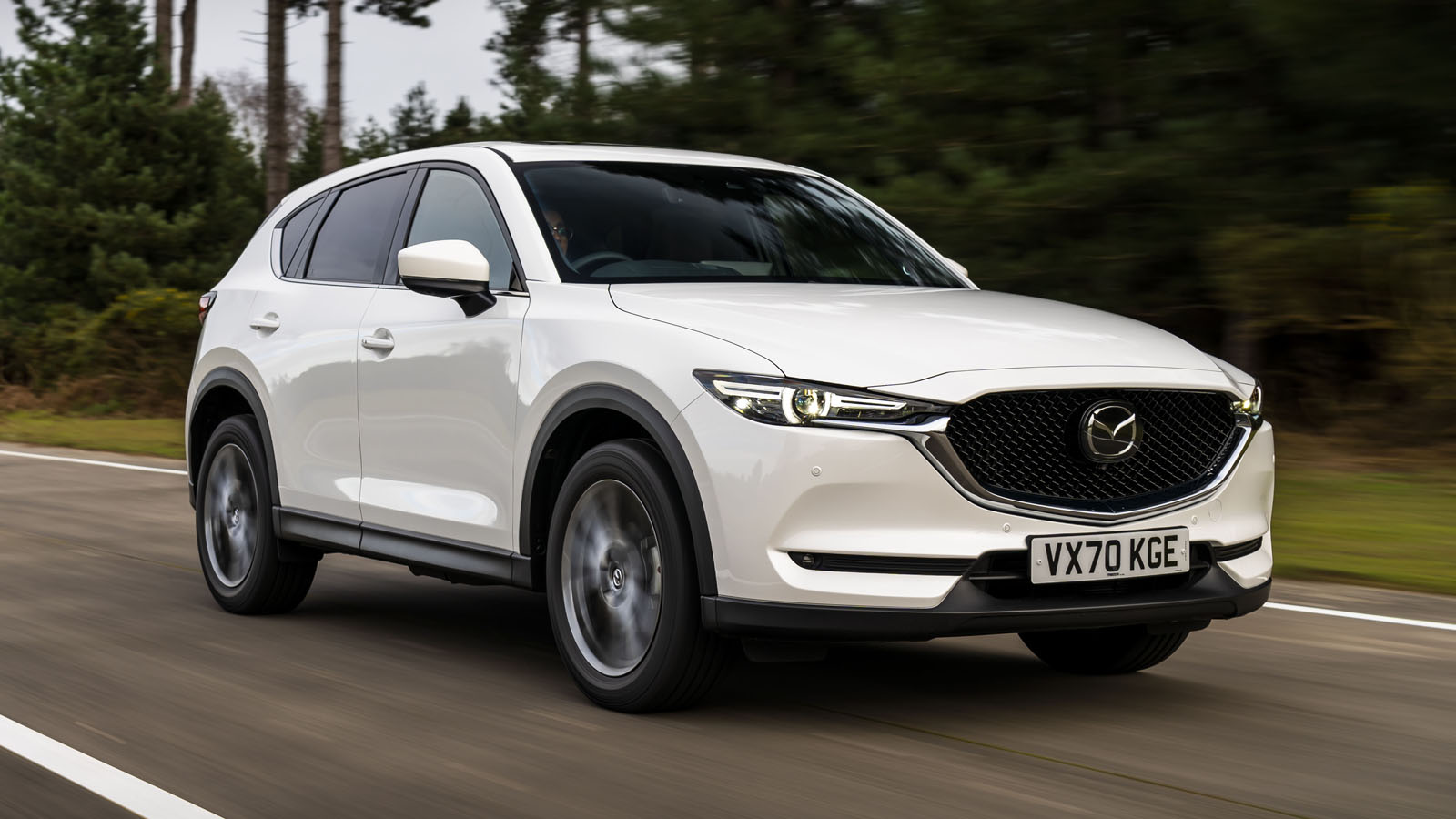
Vehicle design elements significantly contribute to battery preservation. The CX-5’s engine compartment layout provides the battery with excellent protection from extreme temperature fluctuations a leading cause of premature failure.
The charging system implements precise voltage regulation that adapts to battery age and condition, extending useful life by preventing both undercharging and overcharging scenarios that compromise long-term durability.
Particularly noteworthy is the CX-5’s intelligent electrical load management during engine-off conditions. The vehicle implements a staged shutdown sequence that minimizes parasitic drain from onboard computers and accessories, preventing the subtle discharge cycles that cumulatively degrade battery health in many competitor vehicles.
This system is especially beneficial for owners who make frequent short trips or leave their vehicles unused for extended periods. Owner testimonials consistently highlight the CX-5’s reliable starting performance even after years of ownership.
Service records show battery replacements occurring primarily beyond the 6-year mark, with many vehicles approaching 7 years on the original unit.
This reliability extends across diverse climate conditions, though battery performance is particularly impressive in moderate temperature regions where chemical degradation processes proceed more slowly.
Five Cars with Factory Batteries That Don’t Make 3 Years
These electrical system disappointments feature poorly calibrated charging systems that rapidly degrade battery health, often resulting in unexpected failures before reaching even modest mileage milestones.
Their questionable component placement subjects batteries to engine heat, inadequate ventilation, and moisture exposure a perfect storm of conditions that dramatically accelerates chemical breakdown.
Owners report developing an intimate familiarity with jump starters and roadside assistance services as these vehicles begin exhibiting the dreaded slow-crank symptoms after just 24-30 months.
What should be a reliably long-lasting component instead becomes an annual replacement expense, with frustrated owners eventually resorting to premium aftermarket batteries just to achieve normal lifespan expectations.
1. Jeep Wrangler (JL Generation)
The Jeep Wrangler JL generation, introduced in 2018, has developed a concerning reputation for premature battery failure, with many owners reporting replacement necessity before reaching the three-year mark.
This issue persists across various trim levels and engine options, suggesting a fundamental design challenge rather than an isolated component failure.
The root of the Wrangler’s battery problems stems from several interconnected factors. Primary among these is an electrical architecture that creates significant parasitic drain when the vehicle is not in operation.
The JL generation incorporates numerous electronic modules that maintain active status even when the vehicle is parked, continuously drawing small amounts of current that cumulatively deplete the battery.
Owners report measuring drain rates between 50-85 milliamps significantly higher than the 25-30 milliamp draw considered acceptable in modern vehicles.
The factory-installed battery itself appears undersized for the vehicle’s electrical demands. While adequate for basic starting and operation, it lacks the reserve capacity to handle the extensive accessories many Wrangler owners install, such as winches, auxiliary lighting, and entertainment systems.
The stock battery typically ranges from 600-650 CCA (Cold Cranking Amps), whereas aftermarket replacements performing more reliably often feature 750+ CCA ratings with enhanced reserve capacity.
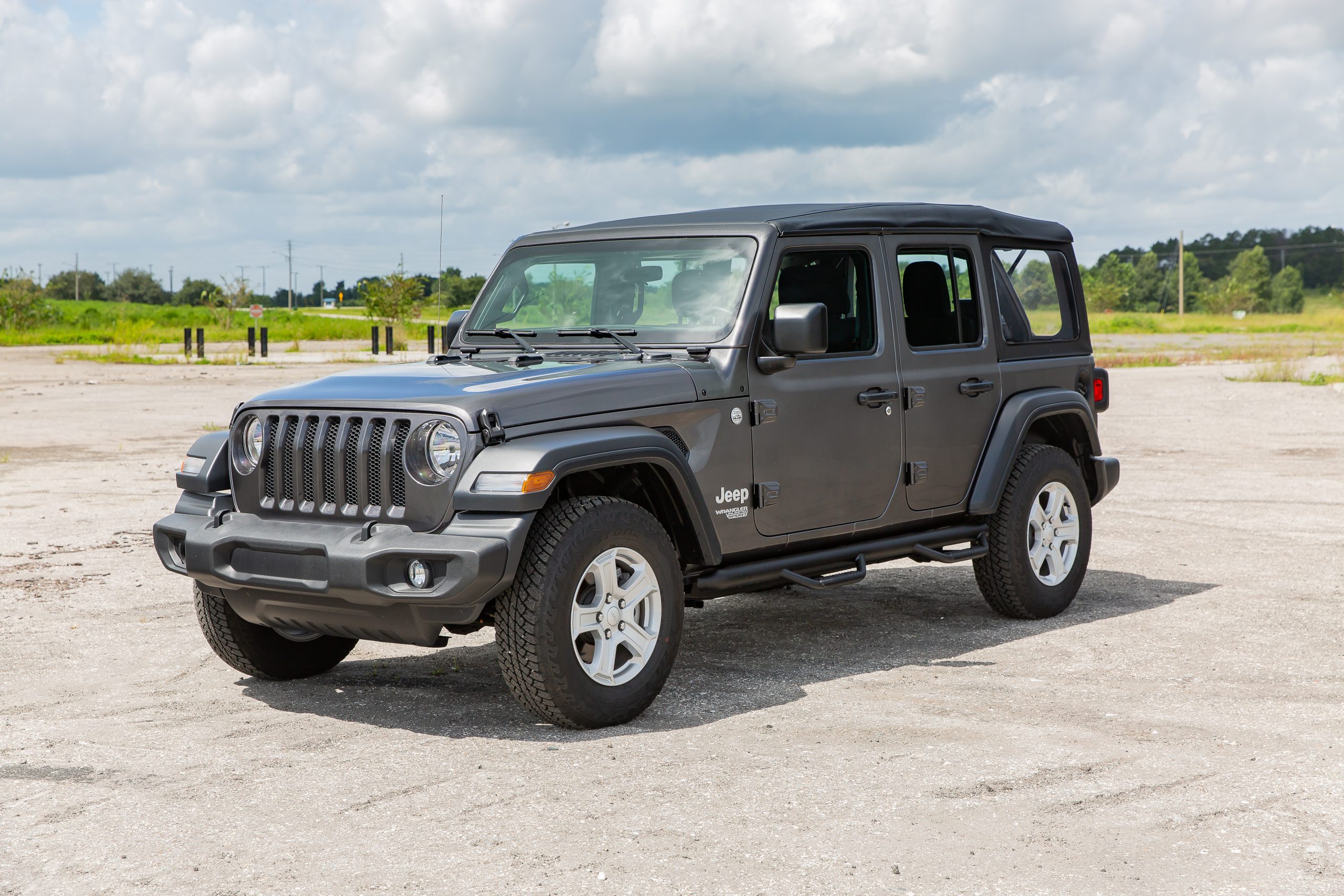
Environmental factors exacerbate these inherent weaknesses. The Wrangler’s off-road orientation means these vehicles frequently encounter extreme conditions that accelerate battery degradation.
Temperature fluctuations, vibration from rough terrain, and extended periods of low-speed operation with high electrical loads create particularly challenging circumstances for battery longevity.
Dealership service departments report battery-related issues among the most common Wrangler complaints, with replacement often occurring between 18-30 months of ownership.
Forum discussions reveal widespread frustration, with owners implementing various workarounds such as installing battery disconnect switches, upgrading to higher-capacity AGM batteries, or adding solar trickle chargers for vehicles stored outdoors.
Jeep has acknowledged these concerns through several technical service bulletins addressing electrical system calibration, though a comprehensive resolution remains elusive. For prospective Wrangler owners, budgeting for early battery replacement represents a realistic expectation.
Current owners can extend battery life by minimizing electrical accessories when the engine is off, implementing a battery maintenance routine with regular charging, and considering aftermarket battery options with specifications exceeding the factory unit’s capabilities.
2. Land Rover Discovery Sport
The Land Rover Discovery Sport represents a paradox of premium pricing paired with disappointing battery performance. Owners consistently report factory battery failure between 18-30 months of ownership a particularly frustrating shortcoming in a luxury vehicle commanding a substantial price premium over mainstream competitors.
The Discovery Sport’s battery woes stem primarily from its complex electrical architecture, which incorporates dozens of control modules that maintain partial functionality even with the vehicle off.
This sophisticated system creates substantial parasitic drain, steadily depleting the battery during periods of inactivity. Owners report that leaving the vehicle unused for just 3-4 days can result in insufficient charge for starting a particular inconvenience for those who use their Discovery Sport as a second vehicle or travel frequently.
Land Rover’s choice of battery technology compounds these issues. Rather than utilizing premium AGM (Absorbent Glass Mat) batteries that better withstand repeated partial discharge cycles, many Discovery Sport models ship with conventional flooded lead-acid batteries ill-suited to the vehicle’s demanding electrical environment.
The battery capacity appears marginally adequate for normal operation but lacks the reserve to accommodate the vehicle’s sophisticated electronics over extended periods.

The vehicle’s infotainment and convenience systems further contribute to battery stress. Owners report that the touchscreen system occasionally fails to enter sleep mode properly, continuing to draw power hours after vehicle shutdown.
Similarly, the keyless entry system maintains constant readiness that incrementally depletes charge. These systems, while offering convenience when functioning properly, collectively create a hostile environment for battery longevity.
Dealership service records reveal battery replacement as one of the most common early warranty claims for Discovery Sport models, with many vehicles requiring replacement before reaching 24 months of service.
Forum discussions document widespread owner frustration, with many resorting to external battery tenders or disconnect switches to preserve battery life additional complications are unexpected in a premium vehicle.
For prospective owners, awareness of these limitations should factor into purchase decisions, with budget allocated for early battery replacement.
Current owners report improved reliability after upgrading to higher-capacity AGM batteries with enhanced cycling capabilities, though this represents an additional expense that ideally would be unnecessary in a vehicle positioned in the luxury segment.
3. Nissan Altima (2016-2020)
The Nissan Altima, particularly models produced between 2016 and 2020, has developed a concerning reputation for premature battery failure. Owners routinely report needing replacements before reaching the 30-month mark a significant shortcoming in an otherwise mainstream, reliable sedan.
The Altima’s battery issues stem from a combination of design decisions and component selections that collectively create unfavorable conditions for battery longevity.
Central to these problems is an electrical system architecture that creates than higher-than-average parasitic drain when the vehicle is not operating. Diagnostic testing reveals many Altimas draw between 50-75 milliamps continuously, significantly exceeding the 25-30 milliamp standard considered acceptable in modern vehicles.
This constant drain steadily depletes the battery during periods of inactivity, particularly affecting owners who primarily make short trips that provide insufficient recharging time.
The factory-installed battery itself appears to be a contributing factor. Nissan’s supplier selection and specifications for the Altima battery prioritized cost efficiency over long-term durability.
The standard battery features conventional flooded cell technology with relatively thin plates that deteriorate rapidly under the frequent partial discharge cycles created by the vehicle’s electrical demands.
The nominal capacity typically around 500-550 CCA provides minimal reserve for accommodating the vehicle’s substantial electronics suite.

Climate factors exacerbate these inherent weaknesses. In hot southern regions, owners report particularly accelerated failure rates, with batteries sometimes requiring replacement before reaching 18 months of service.
The battery location within the engine compartment exposes it to extreme heat cycling that accelerates internal chemical degradation. Conversely, cold-climate owners report marginal starting performance during winter months after just one year of ownership.
Dealership service departments confirm the prevalence of these issues, with battery replacement ranking among the most common non-routine service items for Altima models.
While Nissan’s warranty typically covers the first replacement, many owners express frustration at funding subsequent replacements, particularly when they occur shortly after the warranty period expires.
For current and prospective Altima owners, awareness of these limitations enables proactive planning. Many owners report significantly improved reliability after upgrading to higher-quality aftermarket batteries with AGM technology and increased reserve capacity.
Regular charging maintenance, particularly for vehicles driven infrequently, can extend battery service life, though even with ideal care, the inherent system demands often necessitate more frequent replacement than comparable vehicles from other manufacturers.
4. Chevrolet Malibu (2016-2019)
The Chevrolet Malibu, specifically model years 2016-2019, demonstrates consistently poor battery performance, with many owners reporting failure well before reaching the three-year ownership milestone.
This premature failure pattern has become so common that it represents a significant consideration for used Malibu purchasers. General Motors’ electrical system design choices in this Malibu generation create particularly challenging conditions for battery longevity.
The vehicle incorporates an aggressive automatic start-stop system that cycles the engine frequently during normal driving, especially in urban environments.
While theoretically improving fuel economy, this system subjects the battery to numerous micro-cycling events daily a usage pattern fundamentally different from traditional driving, where batteries experience fewer, longer charging cycles.
This constant cycling accelerates internal plate degradation and reduces overall battery lifespan. The stock battery specification compounds these inherent challenges.
Rather than utilizing an AGM (Absorbent Glass Mat) design better suited to frequent cycling applications, many Malibus shipped with conventional flooded lead-acid batteries.
These traditional batteries perform adequately in vehicles with conventional starting patterns but deteriorate rapidly under the demanding start-stop cycling regimen.
The nominal capacity—typically around 600 CCA—proves marginally adequate for the vehicle’s electrical demands, leaving minimal reserve for accommodating aging-related capacity loss.
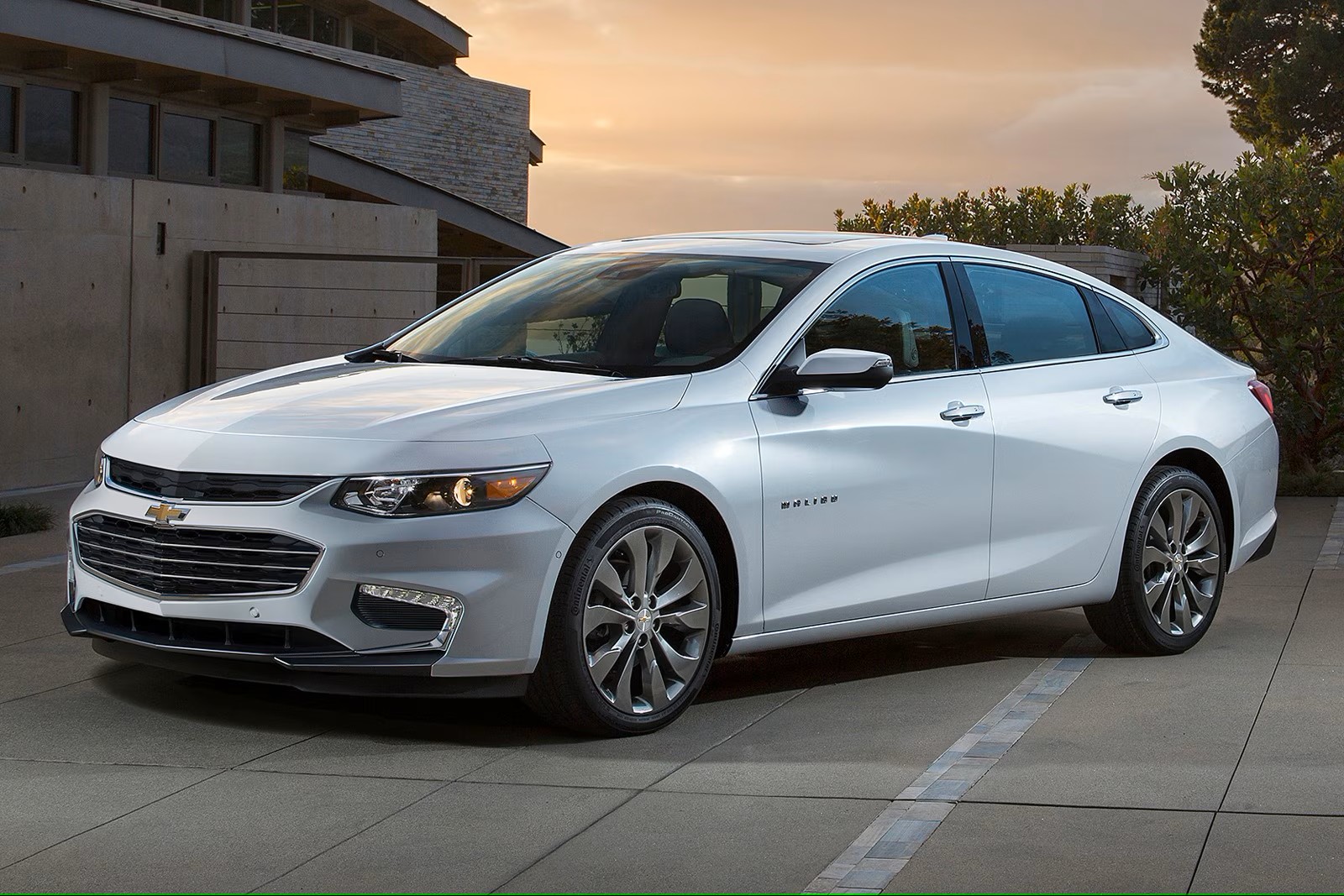
Temperature management represents another significant weakness. The battery location within the engine compartment exposes it to substantial heat cycling, particularly affecting vehicles operated in warmer climates.
Without adequate thermal insulation, batteries experience accelerated chemical degradation that compounds the mechanical stress from frequent cycling.
Owners in southern regions report particularly poor longevity, with some batteries requiring replacement before reaching 24 months of service. Dealership service records confirm the prevalence of these issues, with battery replacement ranking among the most common non-warranty service procedures for this Malibu generation.
While most vehicles experience failure between 24-30 months, some owners report deterioration beginning much earlier, with noticeable starting hesitation emerging around the 18-month mark.
For current and prospective Malibu owners, awareness of these limitations enables proactive planning. Many owners report significantly improved reliability after upgrading to high-quality AGM batteries specifically designed for start-stop applications.
These enhanced batteries typically command a price premium but deliver substantially improved service life that often justifies the additional investment.
Regular battery condition testing, particularly as vehicles approach the two-year ownership mark, can prevent unexpected starting failures and associated inconvenience.
5. Ford Escape (2013-2019)
The Ford Escape, particularly models manufactured between 2013 and 2019, demonstrates consistently problematic battery performance, with owners routinely reporting failure within 18-30 months of purchase.
This premature failure pattern affects both the standard internal combustion models and the hybrid variants, though for somewhat different underlying reasons.
Ford’s electrical system architecture in this Escape generation creates particularly challenging conditions for battery longevity. The vehicle incorporates numerous electronic control modules that maintain partial functionality even when the vehicle is off, creating substantial parasitic drain.
Diagnostic testing reveals many Escapes draw between 50-85 milliamps continuously significantly exceeding the 25-30 milliamp standard considered acceptable in modern vehicles.
This constant drain steadily depletes the battery during periods of inactivity, particularly affecting owners who primarily make short trips that provide insufficient recharging time.
The factory battery itself appears inadequately specified for the vehicle’s demands. Rather than utilizing premium construction techniques designed for deep cycle resilience, many Escapes shipped with conventional batteries optimized primarily for initial cost efficiency.
The standard battery typically rated around 500-590 CCA, depending on specific trim and model year provides minimal reserve capacity for accommodating the vehicle’s substantial electronics suite over time.
As the battery ages and internal resistance increases, even minor capacity loss can push the system below the threshold required for reliable starting.
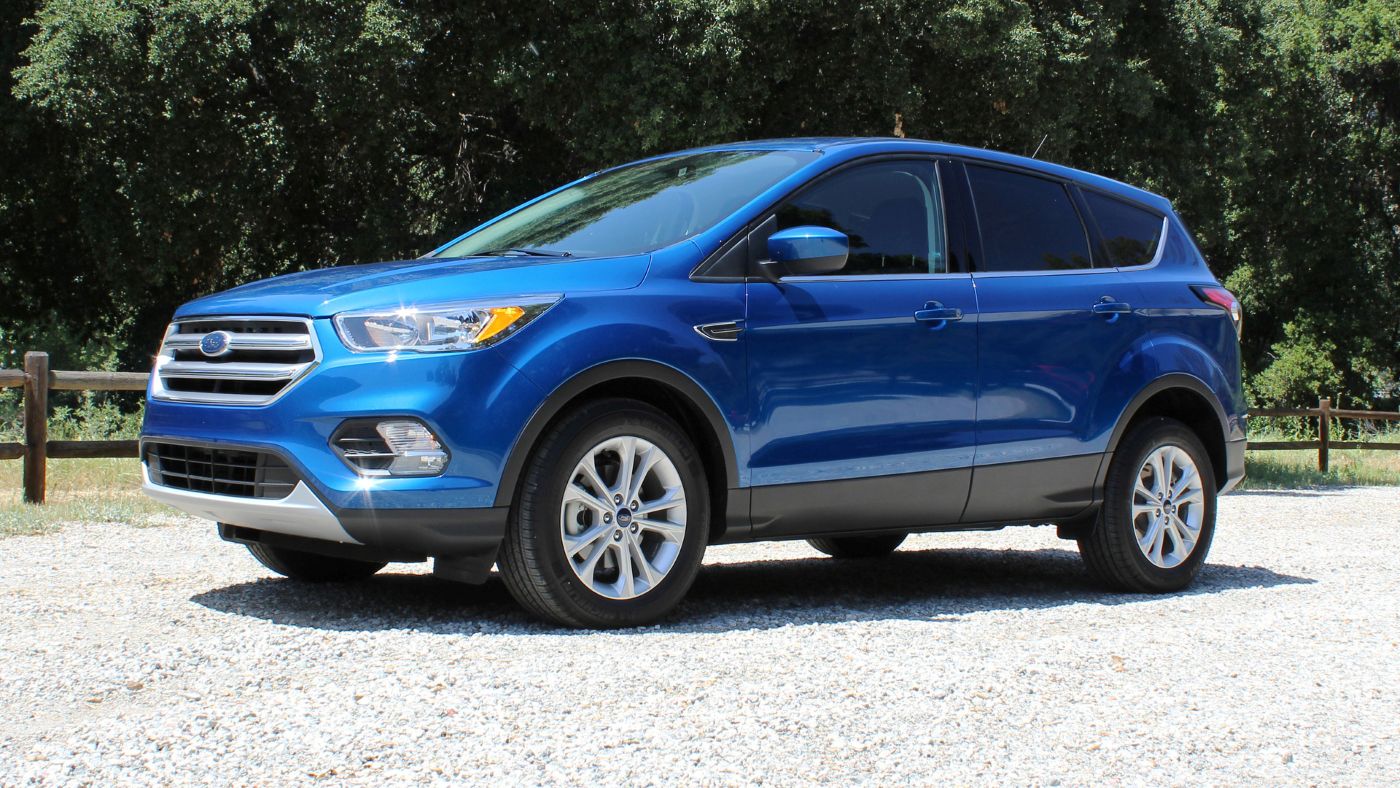
Environmental factors exacerbate these inherent weaknesses. The battery location within the Escape’s engine compartment subjects it to substantial heat cycling, particularly in warmer climates.
Without adequate thermal insulation, batteries experience accelerated chemical degradation that compounds the stress from frequent partial discharge cycles.
Owners in southern regions report particularly poor longevity, with some batteries requiring replacement before reaching the 18-month mark. Service records and owner forums document widespread frustration with these issues, with battery replacement ranking among the most common non-routine maintenance items.
While Ford’s warranty typically covers the first replacement, many owners express disappointment at funding subsequent replacements shortly after the warranty period expires.
The predictability of this failure pattern has become so established that many service centers proactively recommend replacement around the two-year service interval.
For current and prospective Escape owners, awareness of these limitations enables proactive planning. Many owners report significantly improved reliability after upgrading to higher-quality AGM batteries with enhanced cycling capabilities and increased reserve capacity.
Regular charging maintenance, particularly for vehicles driven infrequently, can extend battery service life, though even with ideal care, the inherent system demands often necessitate more frequent replacement than comparable vehicles from other manufacturers.
Also Read: 10 Cars Where Rear Seatbelt Mounting Gets in the Way

